list
Scripted by
HansemVietnam
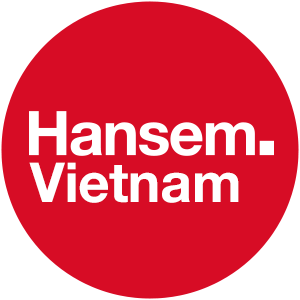

These two countries in the same region with Vietnam, which are characterized by a tropical climate, both Myanmar and Malaysia welcomed us with the very familiar yet still breath-taking beauty of green paddy fields and palm tree plantations from above and the hot weather which we could go nowhere to escape in April in Southeast Asia. However, that feeling of familiarity soon disappeared as we took our first steps walking in the arrival halls of the Yangon International Airport and the Kuala Lumpur International Airport. While we were the first and only passengers in line at the immigration counter at YIA and left in less than a minute both when we arrived and when we departed the next day, we had found ourselves in a long line, spending 30 minutes when we arrived and nearly one and a half hours when we departed just to pass through immigration at KLIA. We never expected the airports to be too crowded, and the more crowded it is, the harder it is for us. Still, seeing such a quiet international airport like YIA was quite surprising and odd to us.
Notwithstanding, the different situation between the two airports became understandable to us when we looked at their economies. According to the International Monetary Fund’s April 2019 estimates, the nominal GDP of Malaysia is $373.4 million with a population of 32.8 million people while those numbers for Myanmar are $65.6 million and 53 million people respectively. Malaysia is obviously way ahead of Myanmar.
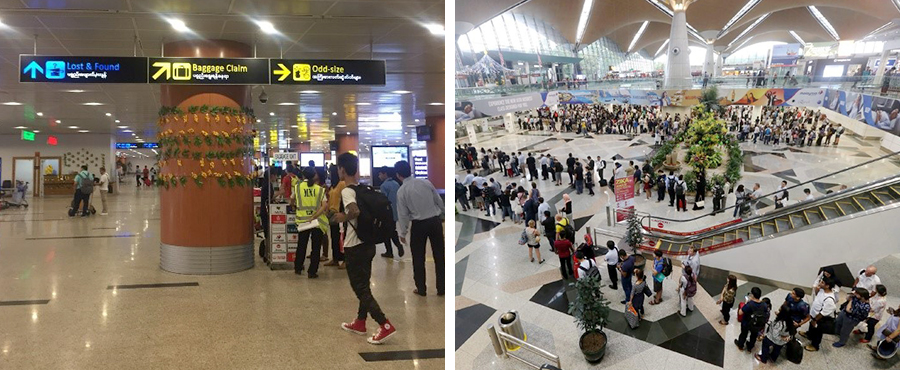
YIA vs. KLIA
The gap in their economies is also well reflected in the infrastructure of their two largest cities – Yangon and Kuala Lumpur. Sitting in an old Grab car, Yangon, in my eyes, is a city of old buildings. They seem to have been there for decades, witnessing all the ups and downs of the city that used to be the country’s capital. Motorcycles and bicycles are mostly not allowed in the city of Yangon, both locals and visitors prefer either taking a taxi (non-metered or through the service Grab) or walking because public transportation, like buses, trains, or ferries, is not very convenient. On the contrary, Kuala Lumpur is a city of skyscrapers – something which I rarely saw while in Yangon. We were overwhelmed with the splendid view of the high-story buildings with unique architecture, especially, the world renowned Petronas Twin Towers. Travelling is quite easy here thanks to the express buses and MRT system. Regardless of these differences, the one thing the two cities share in common is that they both have a lot of green shade.
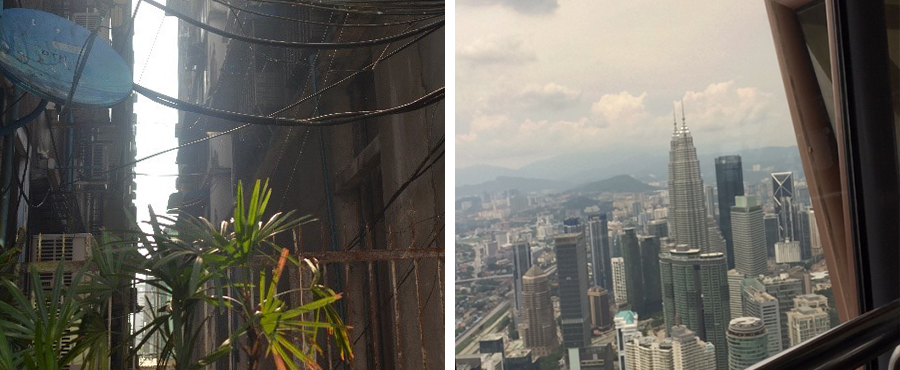
Old Yangon vs. Modern Kuala Lumpur
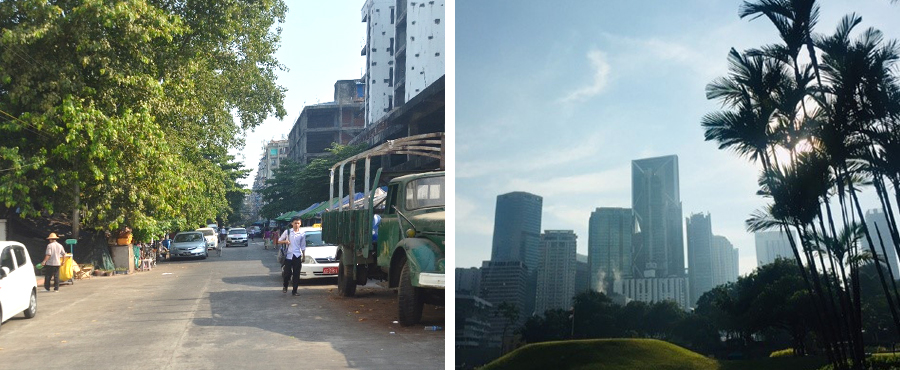
Both Yangon and Kuala Lumpur have a lot of green shade within the city
As a result of the differences in socio-economic conditions, the locals in the two cities have different ways of living. Having the time to walk around the city in the early morning and at night helped me enjoy the slow pace of life in quiet Yangon. In the morning, people relaxingly ate their breakfast that they bought from the street vendors and then walked to their offices. There was no rush in their steps like what I observed when I was in Kuala Lumpur the next morning. People there were in a hurry to get to the bus stops or MRT stations so as not to miss the bus or train taking them to their offices or back to their homes hours later. The pace of life there got faster along with every step people were taking.
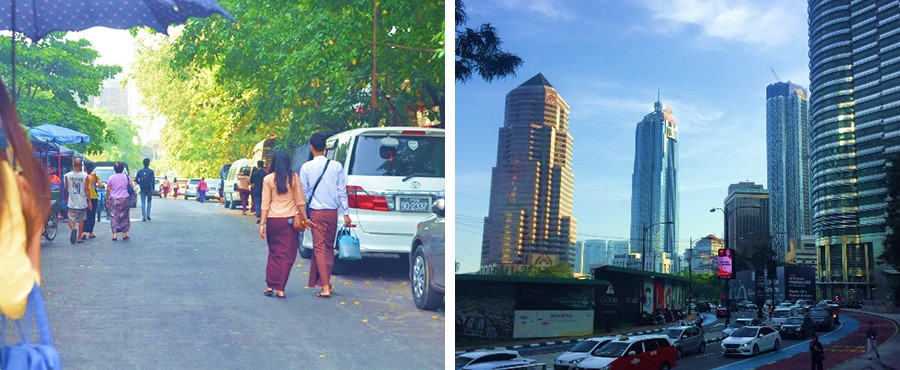
vi1
vi2

We got to know lots of interesting and helpful information through the meetings with our teams
Thanks to the knowledge and experiences that was shared, we could all feel that we were all so close to each other. Whether we are from Myanmar, Vietnam, or Malaysia, we are all working hard, passionately, and responsibly. Above all, the same spirit of progress will keep us moving forward without any limits in mastering new technology and exceeding the expectations. We now clearly understand where our success has been coming from: from these outstanding people.
Our visit quickly ended after three days of smiles, tight hand-shakes, and a promising future for continued collaboration. Once we know the environment and conditions that our resources are in, we believe we will be able to give them the optimum support for their development. After all, the best resources will lead to the best quality for clients, and that is what any LSP like Hansem Vietnam is aiming for.
Hansem Global is an ISO Certified and globally recognized language service provider. Since 1990, Hansem Global has been a leading language service company in Asia and helping the world’s top companies to excel in the global marketplace. Thanks to the local production centers in Asia along with a solid global language network, Hansem Global offers a full list of major languages in the world. Contact us for your language needs!